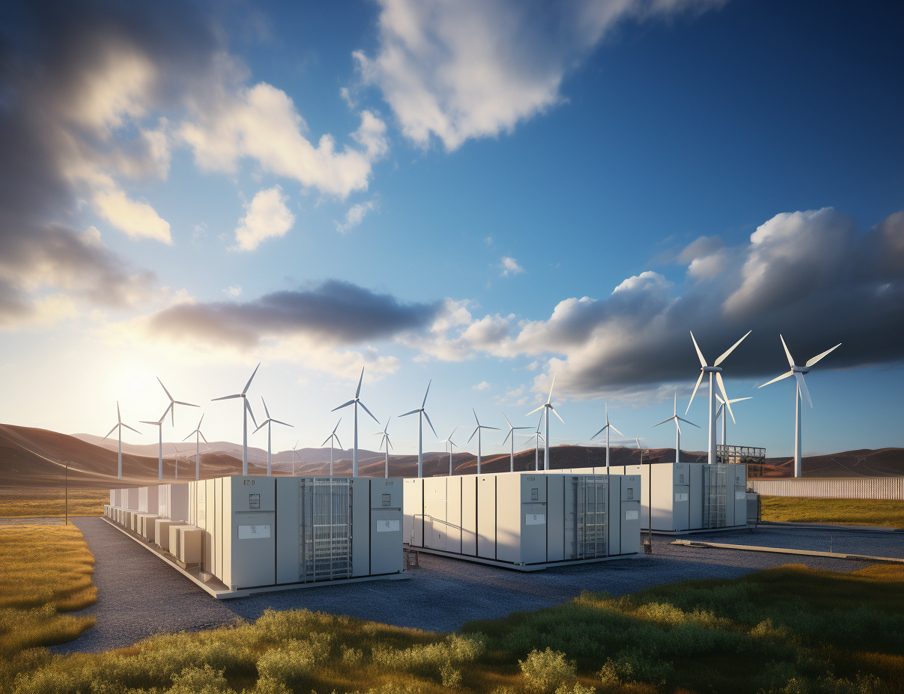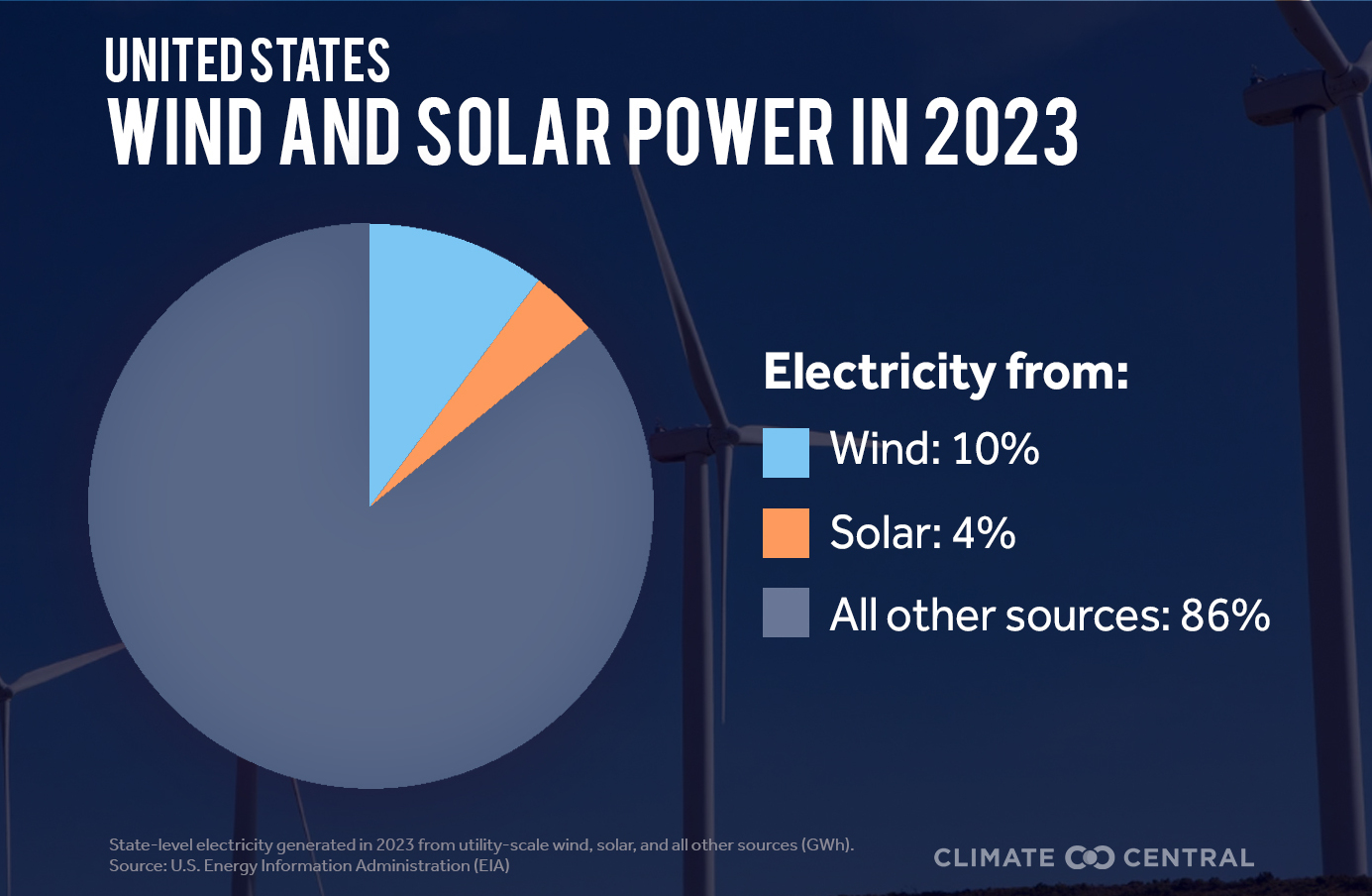
“Our nation generated 238,121 gigawatt-hours of electricity from solar in 2023 — more than eight times the amount generated a decade earlier in 2014. Wind power has more than doubled this decade, with 425,325 GWh coming from wind installations across the country in 2023, ” the report states.
The leading solar power generators were California, with 68,816 GWh, and Texas, with 31,739 GWh. Texas came out on top with wind power generation as well with 119,836 GWh.
Low-carbon renewable energy sources such as solar and wind provide electricity without producing heat-trapping gases or other air pollutants. Renewable energy projects create jobs that support local economies, and help meet US commitments to reduce carbon pollution, according to the Environmental and Energy Study Institute.
According to the researchers at Climate Central, “Solar and wind are the fastest-growing renewable energy sources in the US In 2019, wind generation surpassed the amount of electricity generated from hydropower — a longtime leader in renewable energy. In 2022, solar will overtake hydropower for the first time. Solar and wind energy will lead the growth in US power generation for at least the next two years, according to EIA estimates.”
The states with the most solar capacity in 2023, that includes utility- and small-scale, were California, with 36,461 MW, Texas, 18,476 MW, Florida, 10,352 MW, North Carolina, 7,150 MW, and Arizona 5,848 MW.
Texas led the nation in growth from 2022 to 2023 for both solar capacity and generation. California followed with an addition of 4,714 MW of solar capacity — a 15% increase from 2022. The state produced 5,906 GWh more than the year before.
The US added more than 121 GW of utility- and small-scale solar capacity in total during the years between 2014-2023 — an increase of around 688%.
The amount of electricity produced from solar increased at a similar rate. In 2023, the US generated over eight times more electricity from solar energy than in 2014 — an increase of more than 209,197 GWh or 723%.
In the area of wind energy, the US had an estimated total capacity of 148 GW from utility-scale onshore and offshore wind installations by the end of 2023 — an increase of 6 GW or 4% from 2022.

The states with the most wind capacity in 2023 were Texas, with 40,652 MW; Iowa, 12,803 MW; Oklahoma, 12,245 MW; Kansas, 9,043 MW; and Illinois, 7,874 MW.
These same five states also generated the most electricity from wind power in 2023: Texas, 119,836 GWh; Iowa, 41,869 GW); Oklahoma, 37,731 GWh; Kansas, 27,462 GWh; and Illinois, 22,054 GWh.
Texas led the nation in absolute growth from 2022 to 2023 for both wind capacity and generation. Texas added 1,309 MW of capacity, a 3% annual increase, and generated 5,049 GWh more than the previous year, a 4% annual increase. Arizona and New York stand out for their relative growth in wind capacity from 2022 to 2023. Arizona's capacity increased by 39% with 238 MW added, and New York's by 25% with 557 MW added.
According to the report, “Recent landmark laws are fostering renewable energy growth and moving the US toward its climate goals. The 2022 Inflation Reduction Act contains hundreds of billions of dollars to boost clean energy and cut emissions. The IRA includes provisions such as tax credits, grants, and other financial incentives for renewable energy projects from the utility-scale to individual households.”
Solar and wind energy are key to reducing emissions and reaching 100% carbon pollution-free electricity by 2035.
In 12 states, wind and solar could make up over 80% of electricity capacity by 2035 by utilizing current policies. And New Mexico, Vermont, Virginia, and Wyoming could have over 90% of their electricity capacity from wind and solar by 2035.

